Taking Measure
Just a Standard Blog
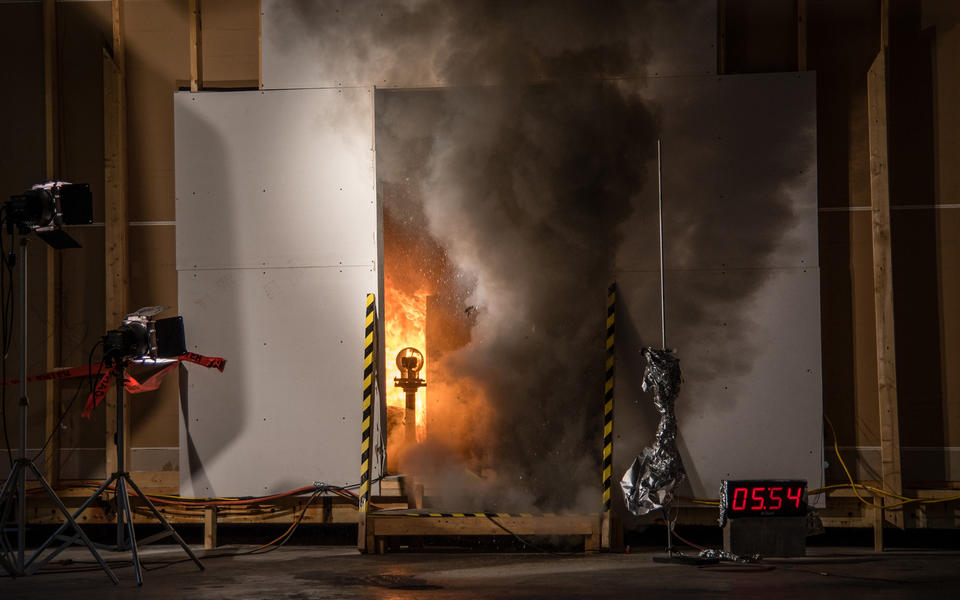
Smoke and flames engulf a test chamber serving as a simulated museum storage room at NIST's National Fire Research Laboratory.
What strikes terror in the hearts of museum curators everywhere? Budget cuts, surely. But worse yet, the prospect of precious, irreplaceable relics being damaged or destroyed in a fire. The Sept. 2, 2018, fire at Brazil's National Museum, estimated to have consumed 90 percent of its 20 million cultural and scientific artifacts, underscores the reality of this danger.
So, how does the Smithsonian Institution, steward of over 150 million artifacts — from the spacesuit Neil Armstrong wore on the moon to Dorothy’s ruby slippers — prepare for such disasters?
As “The Incredibles” icon Edna Mode would say (paraphrasing Louis Pasteur), “Luck favors the prepared.”
A simulated nightmare
“Everyone make sure you have your protective gear on!”
Samantha Snell is shouting instructions to a group of 30 or so eager museum workers standing near the stinking remains of a burned-out room. As the chair of the Smithsonian’s PRICE (Preparedness and Response in Collections Emergencies) team, Snell leads a group of six preservation specialists who have taken on the challenge of training their fellow Smithsonian employees on how to handle disasters such as museum fires and flooding. In a unique collaboration with the National Institute of Standards and Technology, the PRICE team along with a busload of other Smithsonian employees have come to NIST’s National Fire Research Laboratory to participate in an unusual and highly realistic training exercise.
The participants have come from more than a dozen different Smithsonian institutions, including the National Air and Space Museum, the National Museum of Natural History, the Hirshhorn Museum and the American Art Museum. The goal of the PRICE team is to “get people together, expose them to these real-world situations and teach them what they need to know in case they ever need to respond to an emergency in one of their collections,” says Snell.
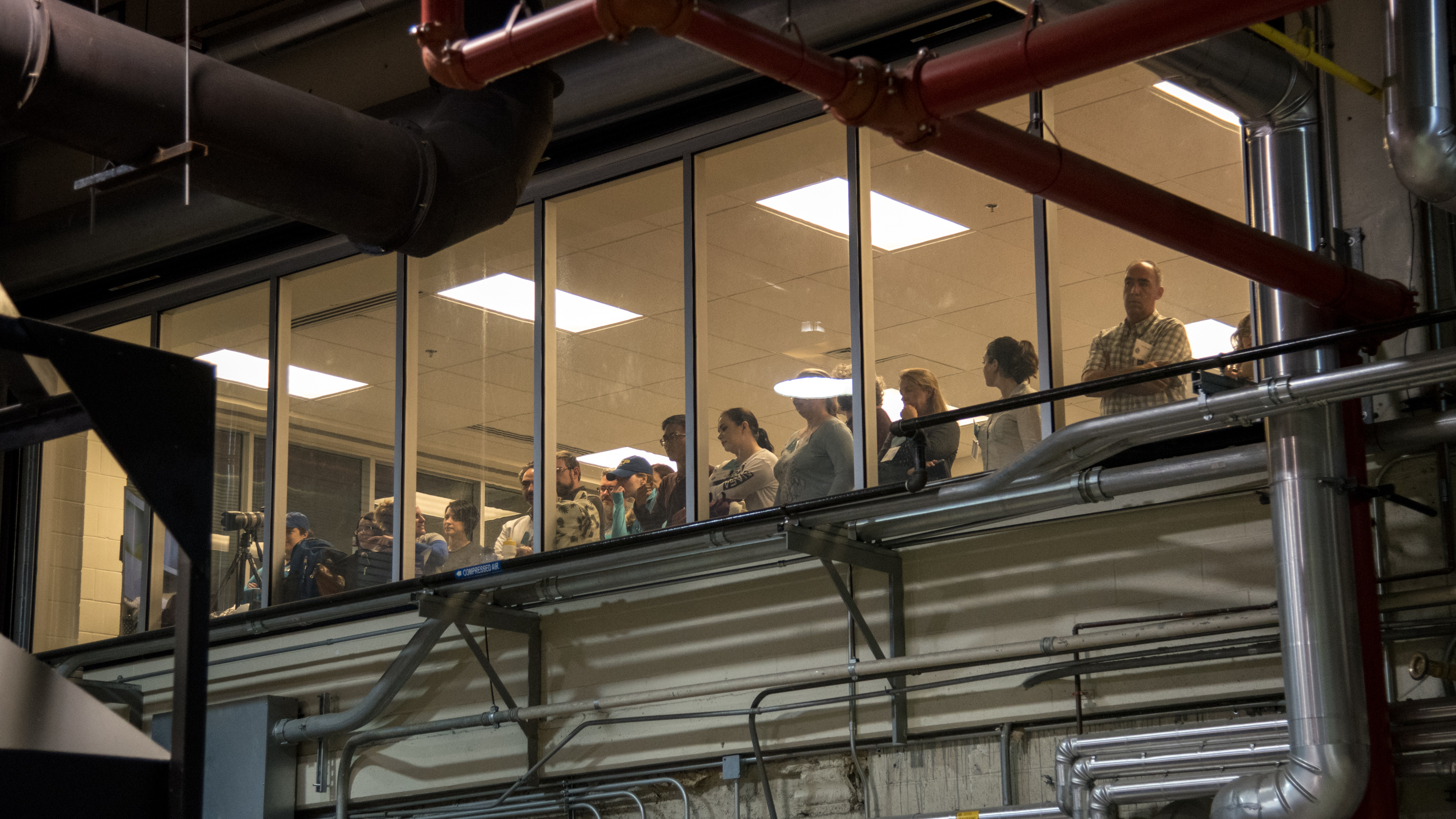
About an hour earlier, Snell and her colleagues observed a simulated nightmare cooked up by NIST’s fire researchers: the burning of a room full of historical artifacts. Although the “artifacts” in this exercise are actually stunt-doubles — unneeded surplus items donated by various Smithsonian museums and staff members — the carnage is quite real. A pottery mask, books, glassware, a painting, and all sorts of other artifact stand-ins are either burned to a crisp, covered in soot, soaked with sprinkler water, or all three.
All of these objects were spared from the dumpster so they could be sacrificed in the name of education. During this exercise at NIST’s fire lab, the artifacts’ charred, soggy remains will be used by the gathered Smithsonian staff to practice salvage and recovery operations.
“There will always be disasters,” says Snell. But by training museum workers in how to care for damaged objects following a fire, Snell and the other members of the PRICE team are helping to ensure the preservation of the Smithsonian’s real museum artifacts — all 154 million of them, stored in dozens of collections across the country.
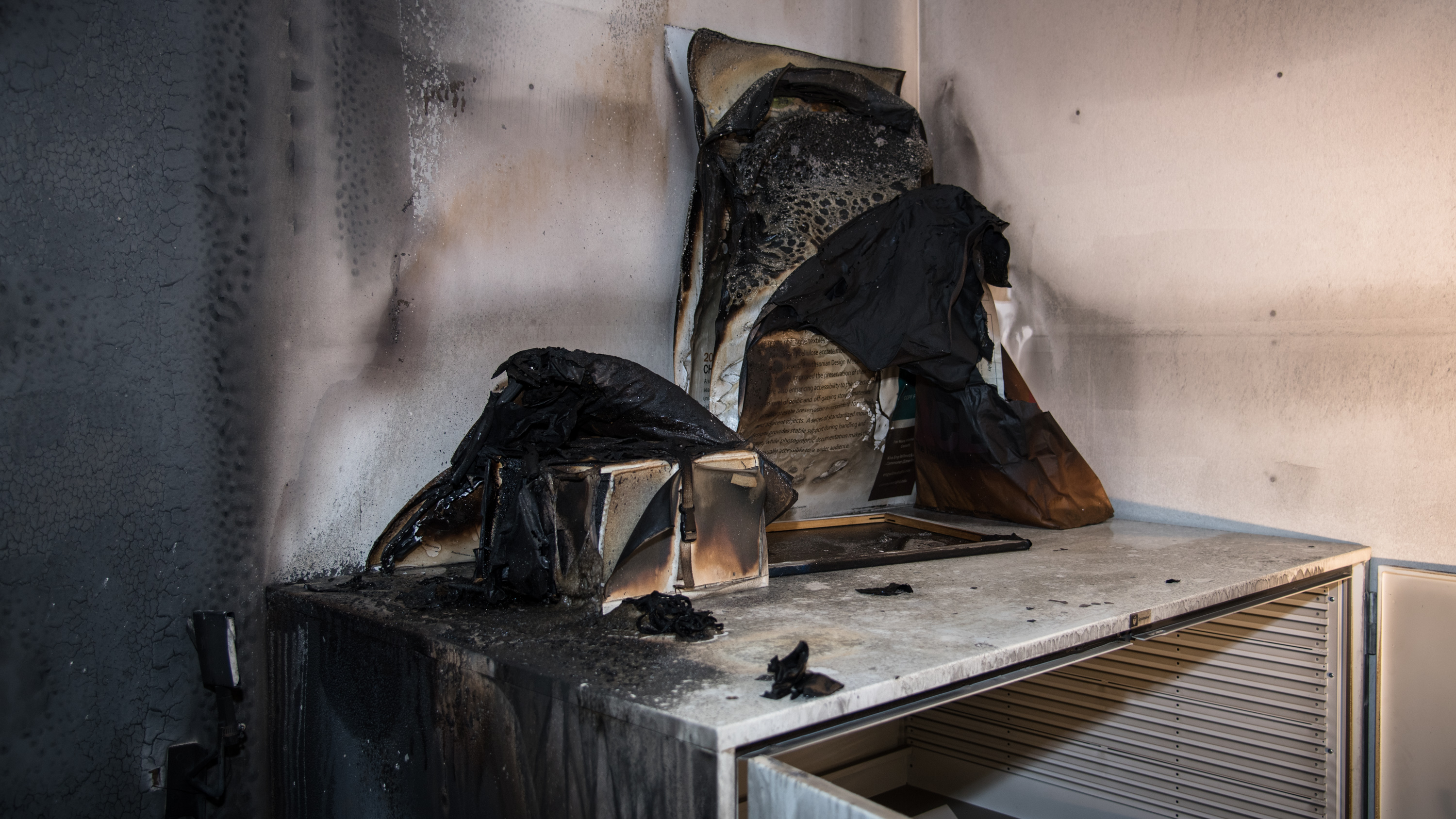
Setting the scene
“NIST has been doing full-scale fire testing for more than 40 years,” says Matt Bundy, director of NIST’s National Fire Research Laboratory. “We know how to do a room-fire experiment and collect real-time measurements — and we know how to do it safely.”
An obvious challenge in simulating a museum inferno is creating a realistic fire while not burning down the whole building. “If you just furnish a room and set it on fire, it can get away from you very quickly,” says Bundy. “This fire grew to more than 2,000 kilowatts in magnitude and the air temperature around the point of origin of the fire reached more than 1,000 ºC [over 1,800 ºF].”
That toasty warm environment originated with an ordinary match, wired up to an electrical source so it would ignite on cue. This “electric match” was tucked inside an office garbage can filled with paper and placed on a wooden pallet along with a box of Styrofoam peanuts. “We wanted to create a scenario that was believable and realistic. Cardboard boxes, Styrofoam peanuts and packing materials are all things that you’d see in a real museum storage area,” explains Bundy.
The rest of the mise en scène was carefully arranged by the PRICE team to recreate a typical museum storage room. Metal shelves filled with artifacts and a storage cabinet with relic-stuffed drawers awaited their doom.
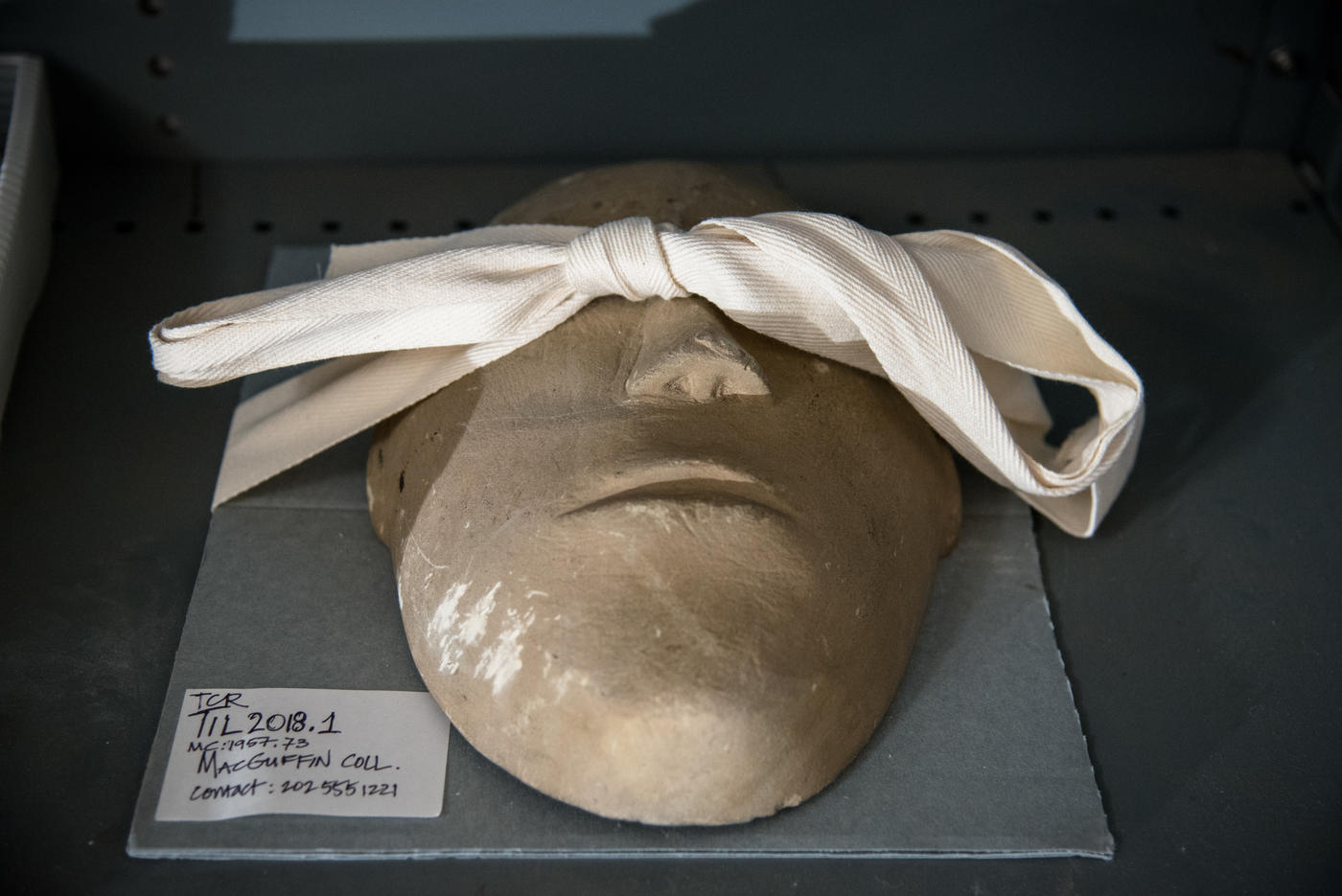
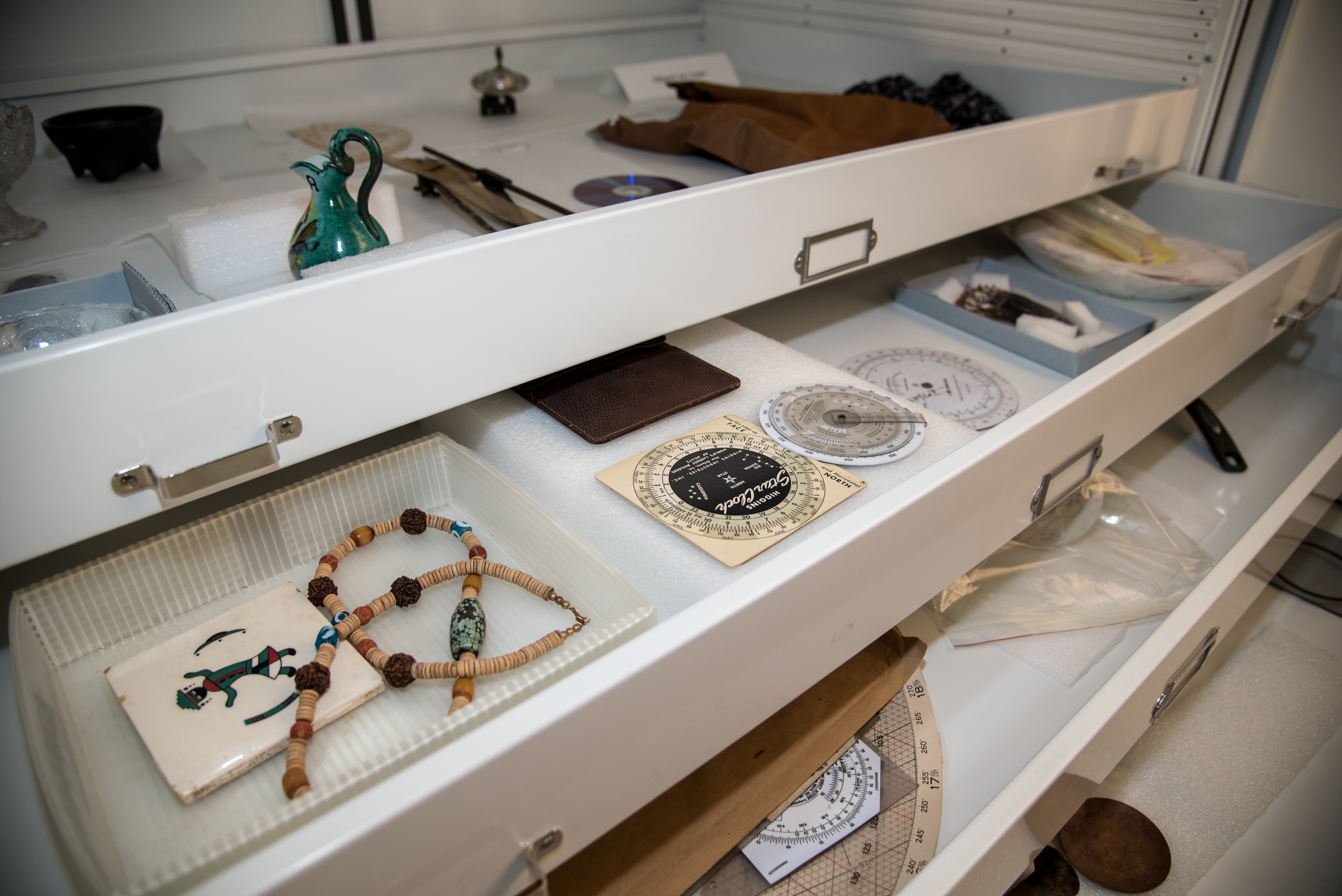
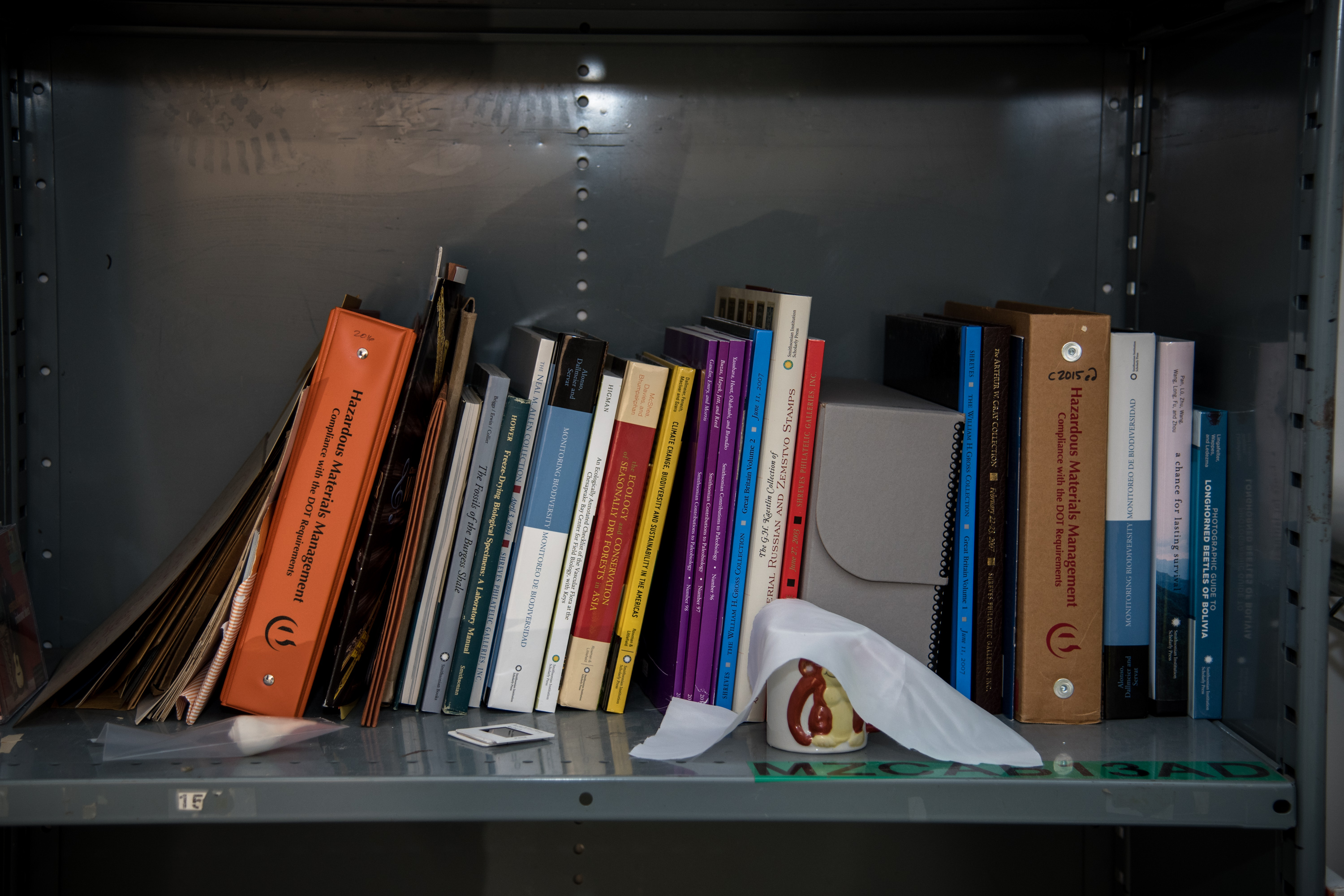

One object looked decidedly out of place, however. What appeared to be an inverted glass fishbowl was perched atop a thick metal pipe. Inside the glass bowl was a small video camera.
Getting inside the fire
“Fire is a complex thing,” says Matt Hoehler as he tightens the bolts down on the glass bowl — a custom camera rig of his own design. Hoehler, a research structural engineer at NIST, has created the water-cooled camera enclosure that allows him to capture immersive, 360-degree video from inside the burning room. The water-cooled camera, dubbed BOB (burn observation bubble) by Hoehler and his colleagues, is a new innovation from NIST’s fire research team. Using constantly circulating water to filter out the intense radiant energy from the fire allows the camera to record footage under conditions which would normally turn it into a puddle of melted plastic.
“You can experience a fire in ways you’ve never been able to before,” says Hoehler.
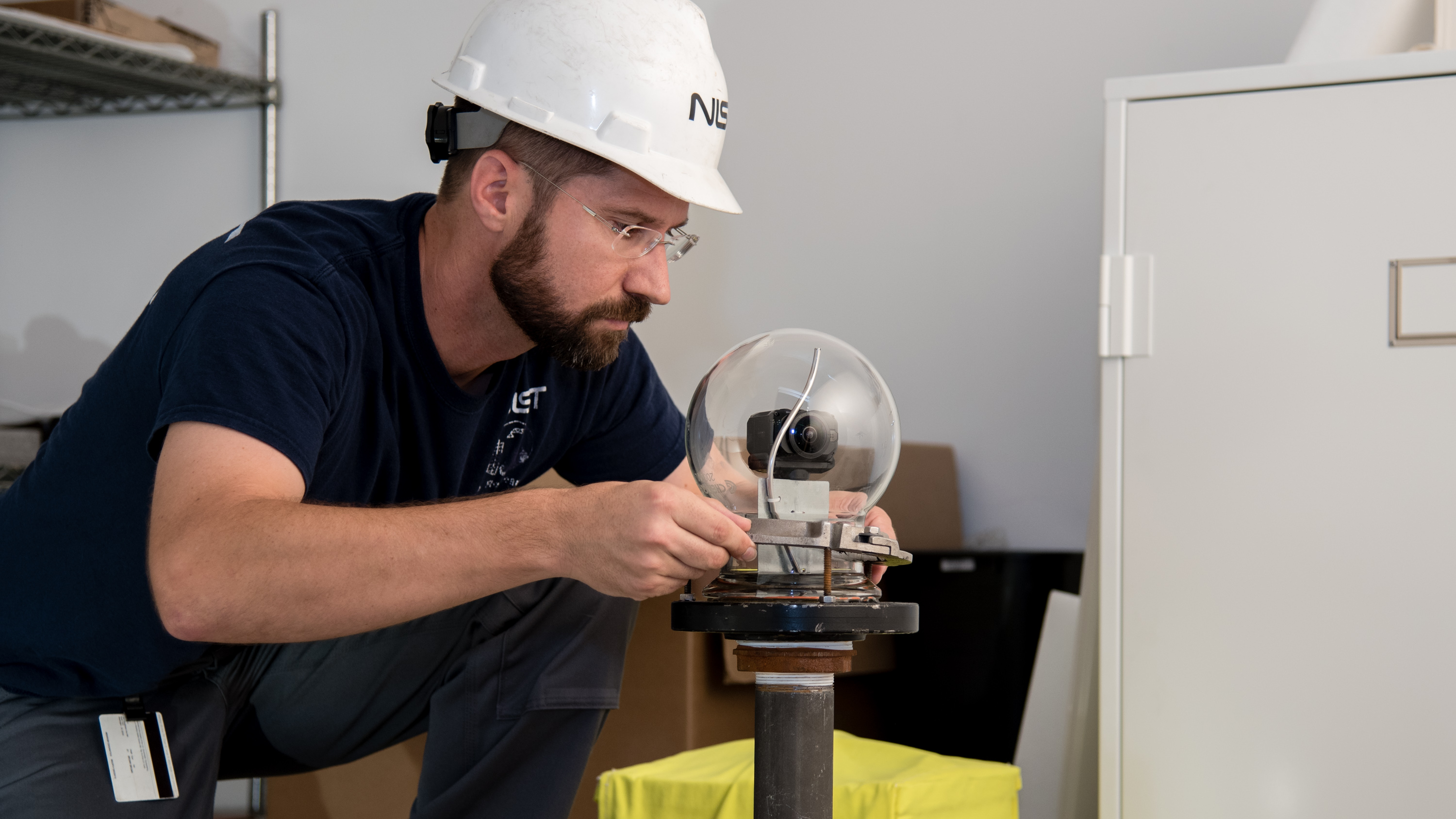
By also using a virtual-reality headset, Hoehler hopes that this new method of observing and interacting with fire data will lead to new insights and awareness. “With VR (virtual reality) we can overlay data on the video image — data such as the temperature at different places in the room. A viewer — say, a firefighter or a policymaker — could watch the video 10 times and pay attention to different things and have a different perspective each time.”
Burn it, soak it, save it
The fire itself lasts about six minutes before Bundy manually sets off the water sprinklers. Steam and smoke gush from the opening of the room. In less than a minute everything in the room is thoroughly drenched.
As the PRICE team members suit up in their white bunny suits and respirators, the 30 or so other Smithsonian participants organize into teams. While members of the PRICE team begin to extract damaged artifacts from the burned room, the participant teams set to work documenting the damaged relics, cleaning them, and finally, labeling and preparing them for shipping. It's a flurry of well-coordinated activity.
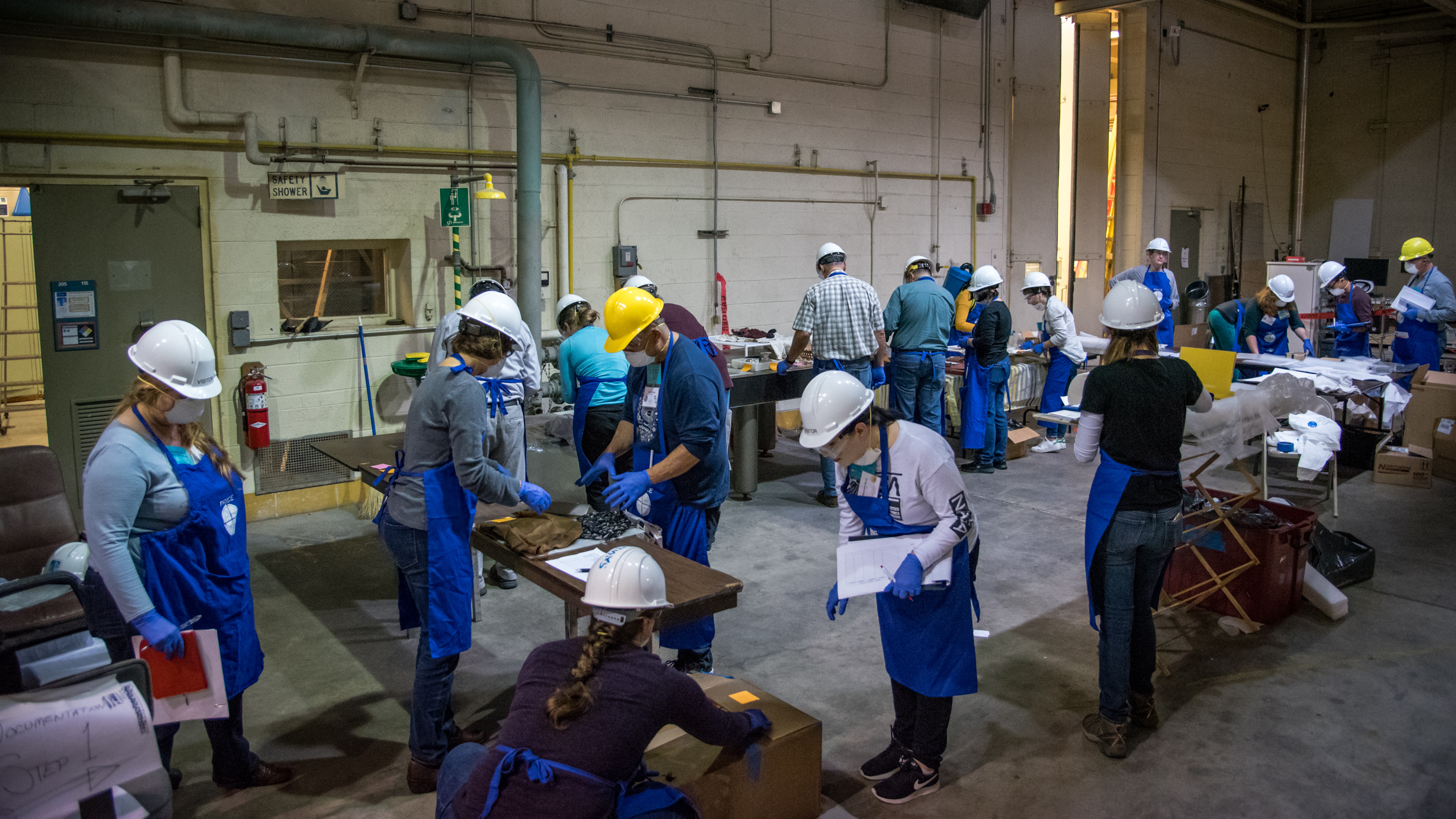
The artifacts are transported from the burned room, then carefully documented. “Documentation is essential after a disaster,” says Snell. “If artifacts are disassociated from their documentation, they might lose all their value simply because they become mysteries.” Not all relics are as recognizable as Dorothy’s ruby slippers, after all.
After the artifacts are documented, the Smithsonian participants examine and meticulously clean any that can be salvaged, using sponges to wipe off soot and vacuums to suck up water. After they go through triage, the salvaged artifacts are labeled and wrapped up to prepare them for shipping to a safe location, away from the disaster area. As the participants move the artifacts along this assembly-line-like process, they’re constantly communicating and making small changes as they work, fixing bottlenecks and sharing resources.
“Emergency preparedness should be part of our everyday duties,” remarks Snell. “We expose our participants to these situations so they can learn and take that knowledge back to their institutions.”
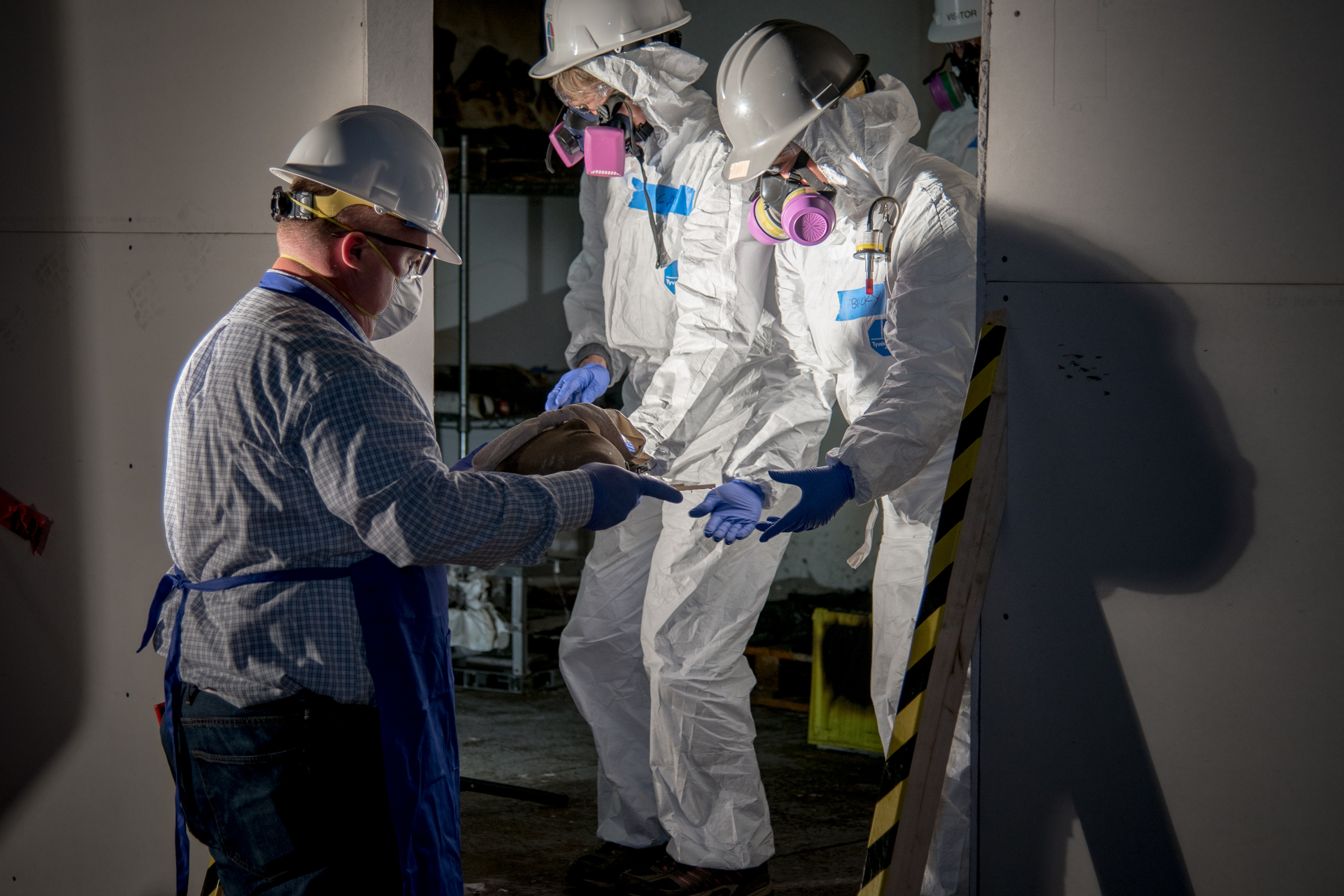
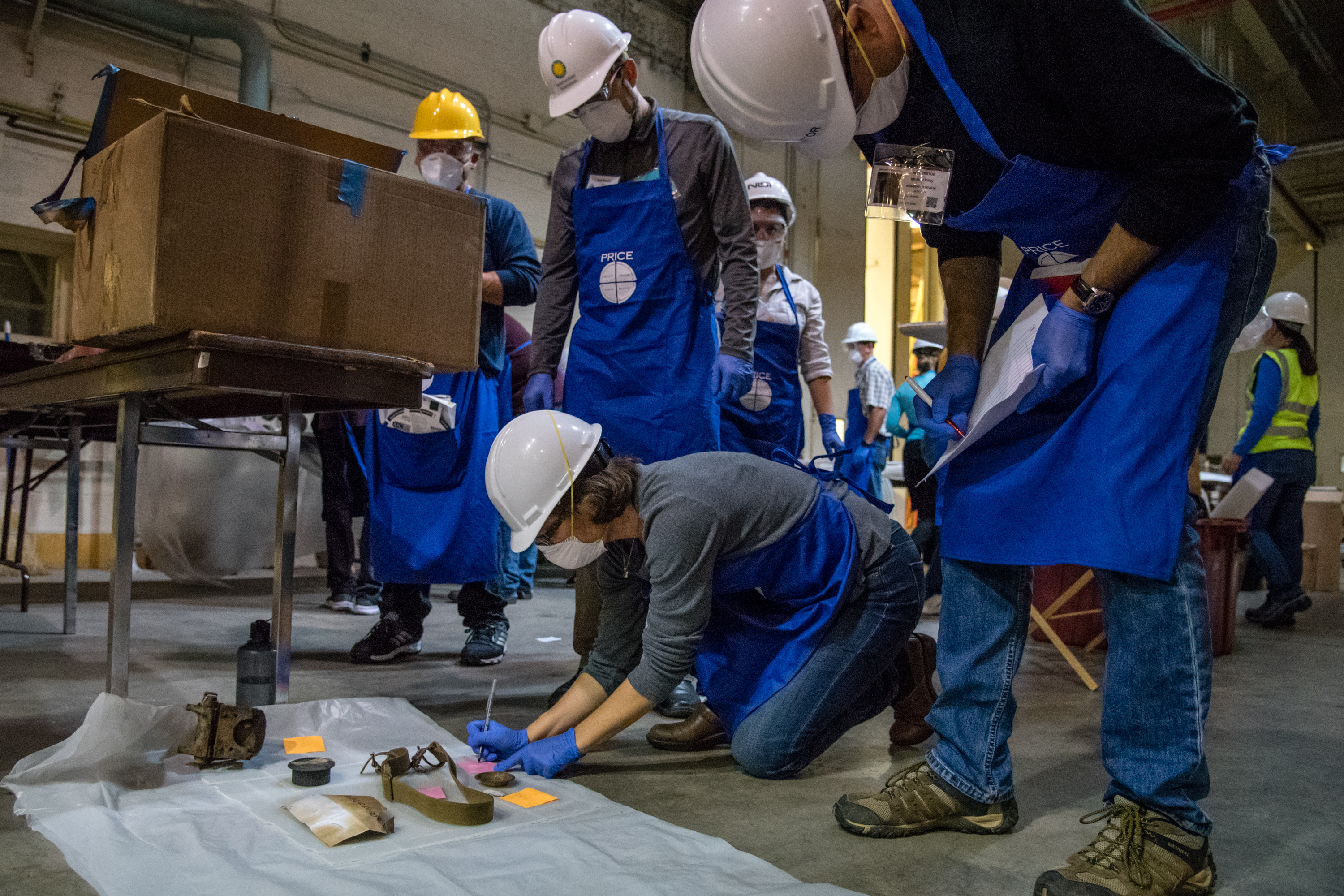
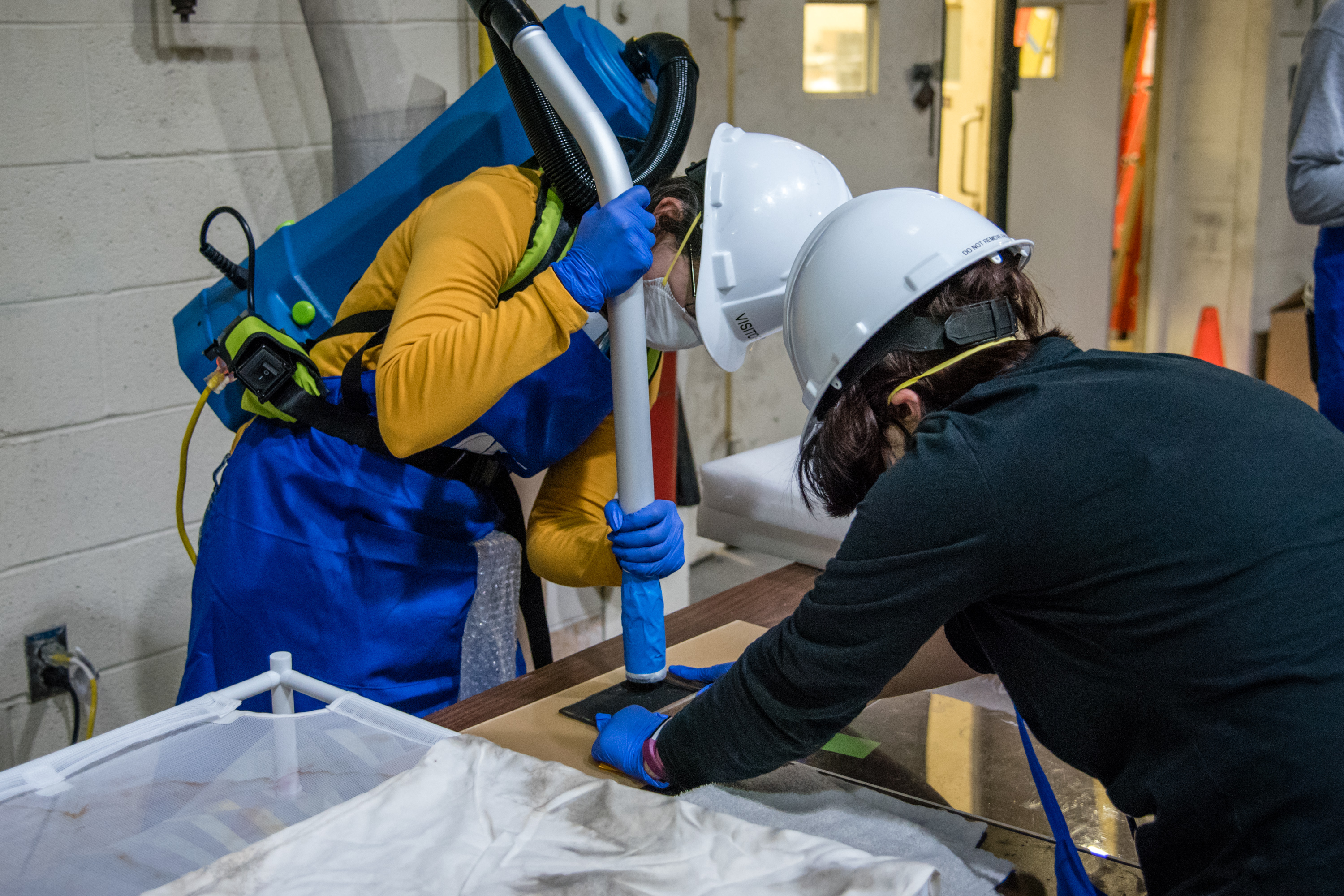
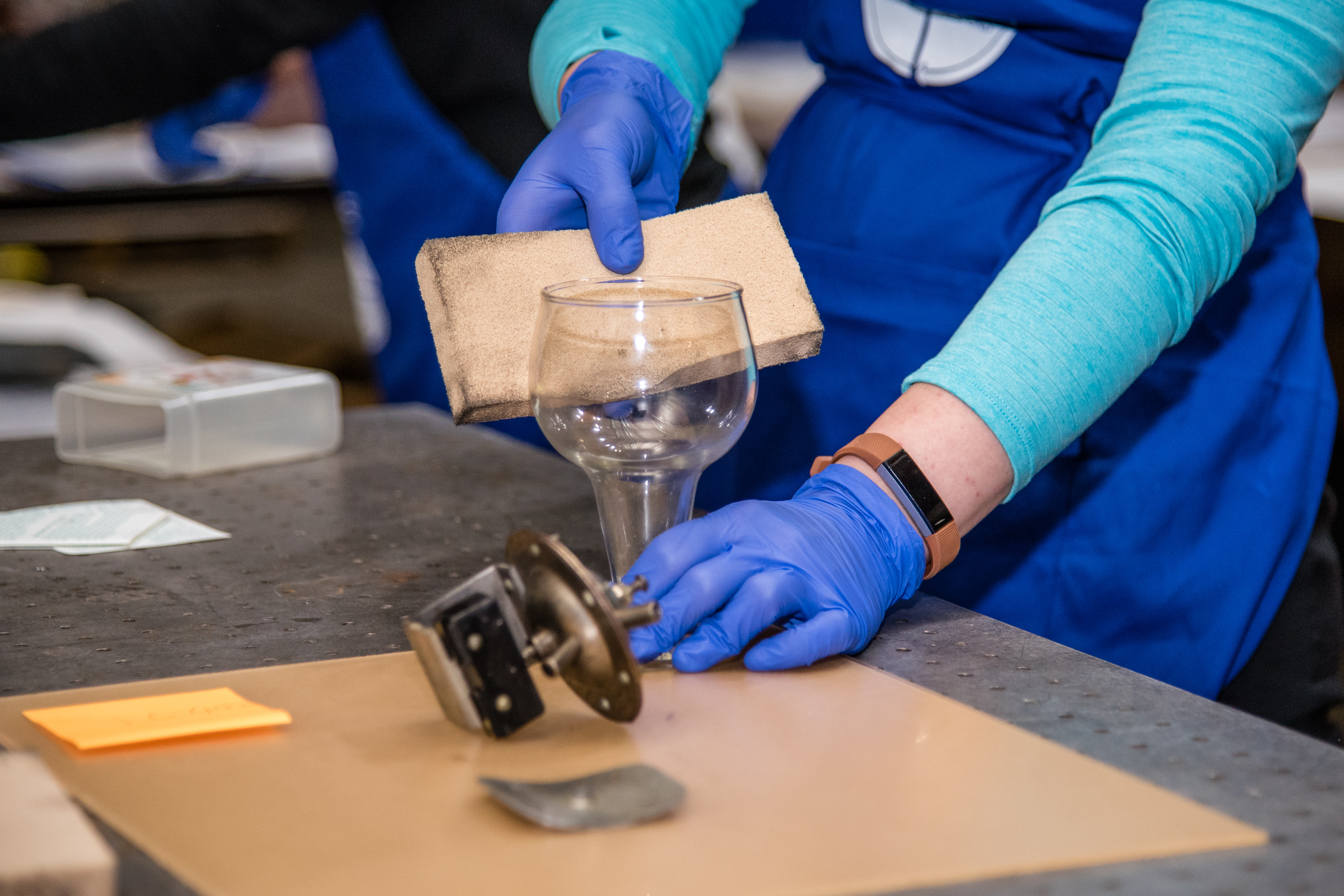
The prepared
After the last blackened artifacts are tucked away in bubble wrap, the Smithsonian participants pack up and return home. In addition to boxes filled with charred “relics,” they’re taking with them a wealth of information and hands-on experience.
“The disaster in Brazil [at the National Museum] was tragic,” reflects Snell. “Our cultural relics represent us. They give us our identity. Seeing destruction at that scale is just devastating.
“We’re acutely aware of this threat every day.”
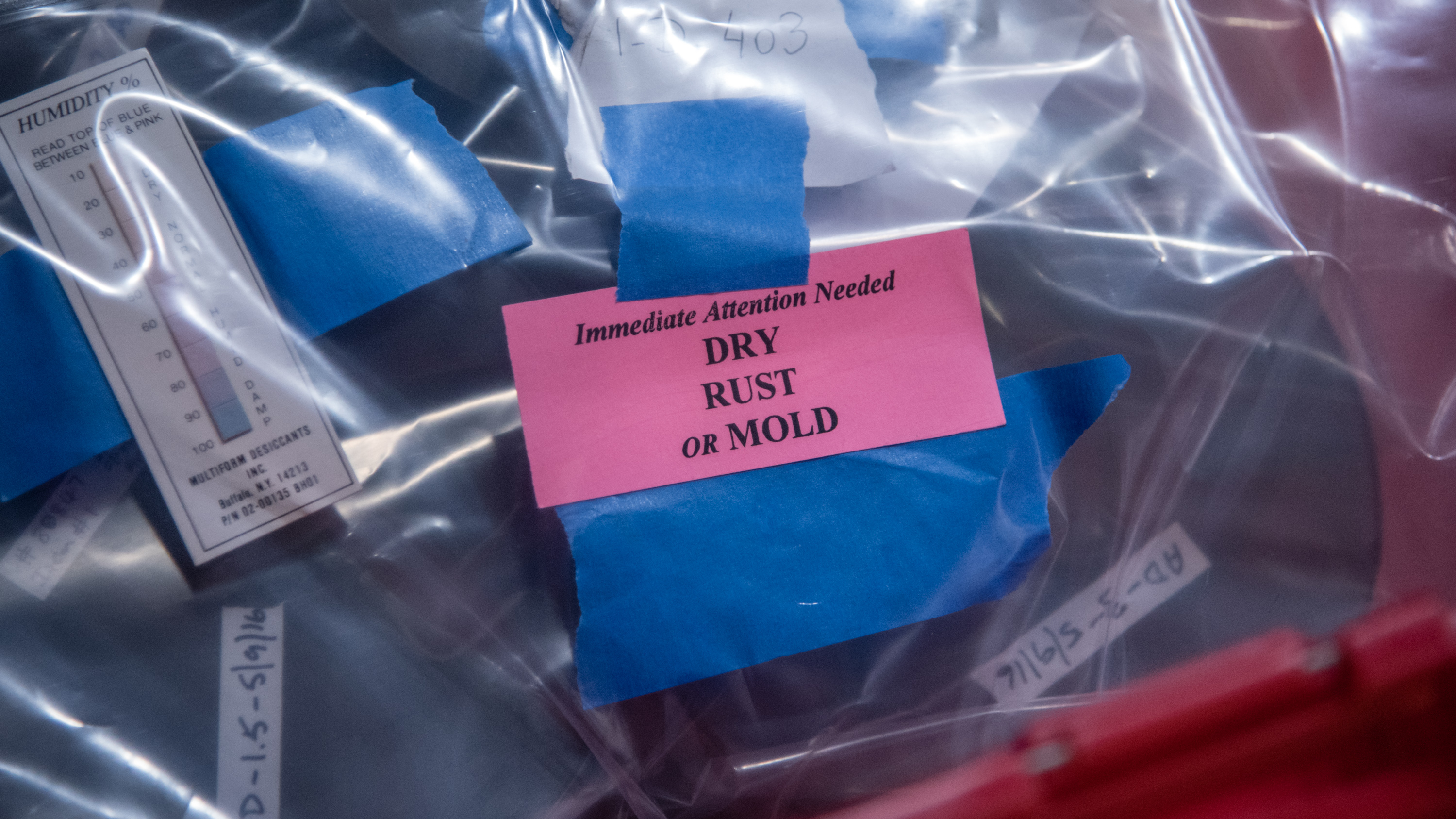
With the exercise complete, the NIST fire researchers will return to their work of burning less exotic things, such as the concrete and steel beams used in buildings. But the PRICE team left an impression: “I was impressed,” says Hoehler. “It made me feel good, knowing that we have people looking after our national collections so well.”
And perhaps the next time one of the Smithsonian participants wakes up in a cold sweat from visions of flames, they’ll be able to roll over and get back to sleep.
About the author
Related Posts
Comments
Thank you for your comment, Claudio.






Excellent initiative. Brazil has lost more in museum fires than in the tragic one at Museu Nacional. Example: fire in the library of DNPM (National Department of Mineral Production) destroyed all (?) the XIII, XIX centuries hand made prints of minerals, plants, insects, done by expert European artists traveling and working in the country at that time. No photographic devices were available then. Irreplaceable artifacts and documentation were reduced to ash.